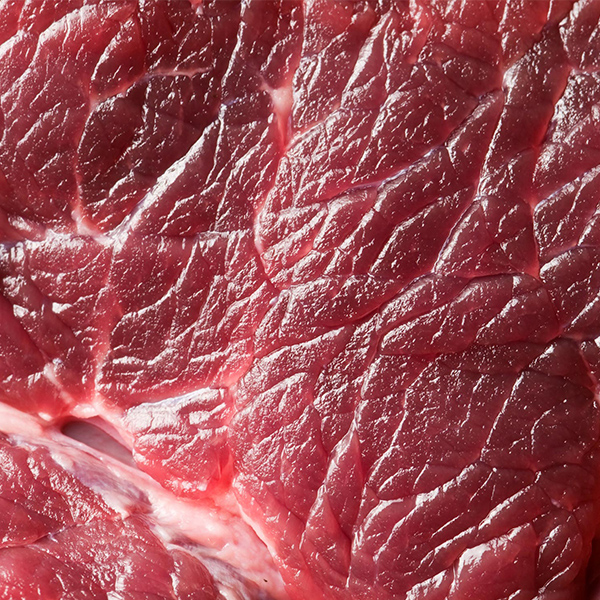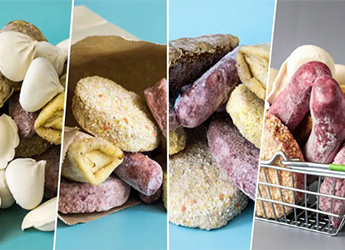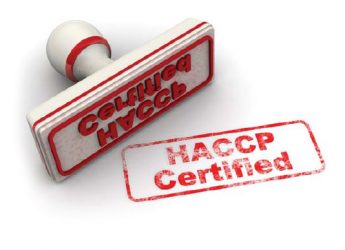Color formation defects in chilled meat vacuum packaging

The fact is that when natural chilled meat, especially beef, is vacuum-packed, it immediately darkens, acquiring a greenish or greenish-brown hue. So clarify the details: chilled beef is packed, vacuum bags or shrink film of well-known world manufacturers are used for packaging, and the shelf life of the product at t = 0-4 °C, according to technical specifications, is 7 days. Is this a defect? If yes, how to prevent it ? And if not, these are the features of the “behavior” of meat in an airless space, the so-called discoloration of meat, then how to convey this information to retail chains and, most importantly, to the consumer so that he buys this chilled meat? After all, manufacturers claim, that this is a high-quality product, without the use of any chemical improvers.
Discoloration is the first reason for such “behavior” of vacuum-packed chilled meat. This issue is faced by all enterprises that deal with chilled meat (beef, pork). The essence of the meat discoloration (color changing) process after packaging in vacuum bags is explained by the fact that the access of oxygen to the myoglobin present in the meat is blocked. This process is standard, and it is reversible. So, after removing the packaging and resuming contact with air, the bright red color returns within a few minutes. To make this product more color attractive in trade, many stores use special lighting lamps (pink), under which vacuum-packed meat looks the same as unpacked meat. This trip allows us to solve the discoloration problem.
While vacuum packed, the beef darkening and its greenish tint are normal. It indicates that it is natural meat that was not packed with any chemical improvers (for example, formaldehyde, etc.). It is caused by the lack of oxygen in the package, and after opening it, the meat will again acquire the color it had before packaging. “Certainly, in the beginning, the best is to carry out laboratory studies of the packaged product (this enterprise can do this both in its production and an independent laboratory) and have the complete information to understand the causes of color change since other factors could affect the beef color change.
This problem mainly concerns products that are in the upper part of a folded “pyramid” of several packages, that is, in the light. “The red color of meat is given to a greater extent by the pigment myoglobin, a type of complex protein consisting of a protein part – globin and a non-protein part – heme. It is the heme that is responsible for the formation of a different shade of meat. “In the presence of oxygen, myoglobin is oxidized (Fe+2 form) to form oxymyoglobin (MbO2), which gives the meat its light red color,” he explains. – Under the influence of light, a deeper oxidation occurs, while the heme iron changes from divalent to trivalent (Fe + 2 to Fe + 3), and brown-gray metmyoglobin (MetMb) is formed. When myoglobin reacts with hydrogen sulfide, sulfomyoglobin, a green pigment, is formed.

The second possible reason is the contamination of meat with saprophytic microflora. It can be caused by violations at the meat slaughter and deboning stage (non-compliance with temporary slaughter and deboning stage regimes, insufficient compliance with sanitary and hygienic standards, improper air disinfection in the room, etc.). In this case, “old school” manufacturers recommend better air disinfection using germicidal lamps, so-called “blue lamps” etc.
In turn, representatives of the additives market remind us about the possibility of surface treatment of meat. “The main criteria for the quality and attractive presentation of a packaged semi-finished meat product are compliance with sanitary standards and rules during the primary processing of livestock and pigs on the slaughter lines, poultry and cutting meat into semi-finished products; the thermal state of the product prepared for packaging (0+2°C); vacuum pressure indicator (we recommend not higher than 1 bar); type of packaging material (wrap).
Based on our working experience with this problem, we recommend that manufacturers treat the chilled semi-finished product with ascorbate-containing functional additives, which do not affect the quality of meat at all since ascorbic acid is also present in baby food products, they stabilize the pH level. It has a positive effect on the meat’s “freshness” and meat juice with a rich red color in vacuum packaging. The meat must be processed in the massager under full vacuum for 1 hour, with a drum rotation speed of no more than 4 rpm and maximum load to avoid the “acid” aroma presence while opening the package. Then let it ripen at rest for 1 hour and then go on the packaging. In this case, in addition to the fact that the meat juice in the package will retain its natural color, release during vacuuming will also significantly decrease (up to 30%).”
The third possible factor is the nuances at the stage of product vacuumization. “The vacuum pressure is approximately 1-1.5 bar. The manufacturer can try to “play” a little with parameters such as the pressure and vacuuming time of the product. Either increase or decrease, or simultaneously, for example, reduce the evacuation pressure, increase the time accordingly, and analyze the results of the experiments.
The fourth recommendation concerns the possibility of using other packaging materials (with different characteristics). “In this situation, a manufacturer can try using polypropylene wrap. You can try using a vacuum bag that contains polypropylene, polyethylene, and polyamide (polyamide + polyethylene + EVO (ethyl vinyl alcohol). It will give a more “pink” tint to the product under the wrap.

The fifth factor is so-called meat defects (DFD meat). Microorganisms that produce hydrogen sulfide grow in dark, firm, and dry meat. Hydrogen sulfide reacts with myoglobin, resulting in a green tint and off-flavors when the meat is vacuum-packed.
Finally, the sixth recommendation is to switch to a different packaging method, for example, by using a modified atmosphere (MA). “Vacuum packaging will never be able to preserve the meat’s natural color and avoid the problem of its decoloration, no matter what (pork, beef, lamb, etc.). Today, chains place higher demands on the appearance of fresh/chilled meat in the package. Packaging should ensure not only compliance with the shelf life by the technical specifications but a worthy presentation of the product and the quality of meat. An important stage in meat products production is an industrial conveyor line for deboning half-carcasses, which ensures high productivity and quality. All this can be achieved by using the technology of packaging meat products in MA, using gas mixtures for the food industry under European norms and standards FSSC 22000.
80% oxygen and 20% carbon dioxide of the gas mixture must be used to preserve the product color during packaging. The use of oxygen just allows you to keep the red color of the meat. The advantage of the anaerobic gas mixture is the long-lasting effect of the tenderizing enzymes, which makes the beef more tender during storage in the package. The quality of the packaging equipment plays an important role here.



